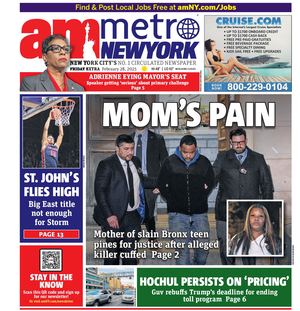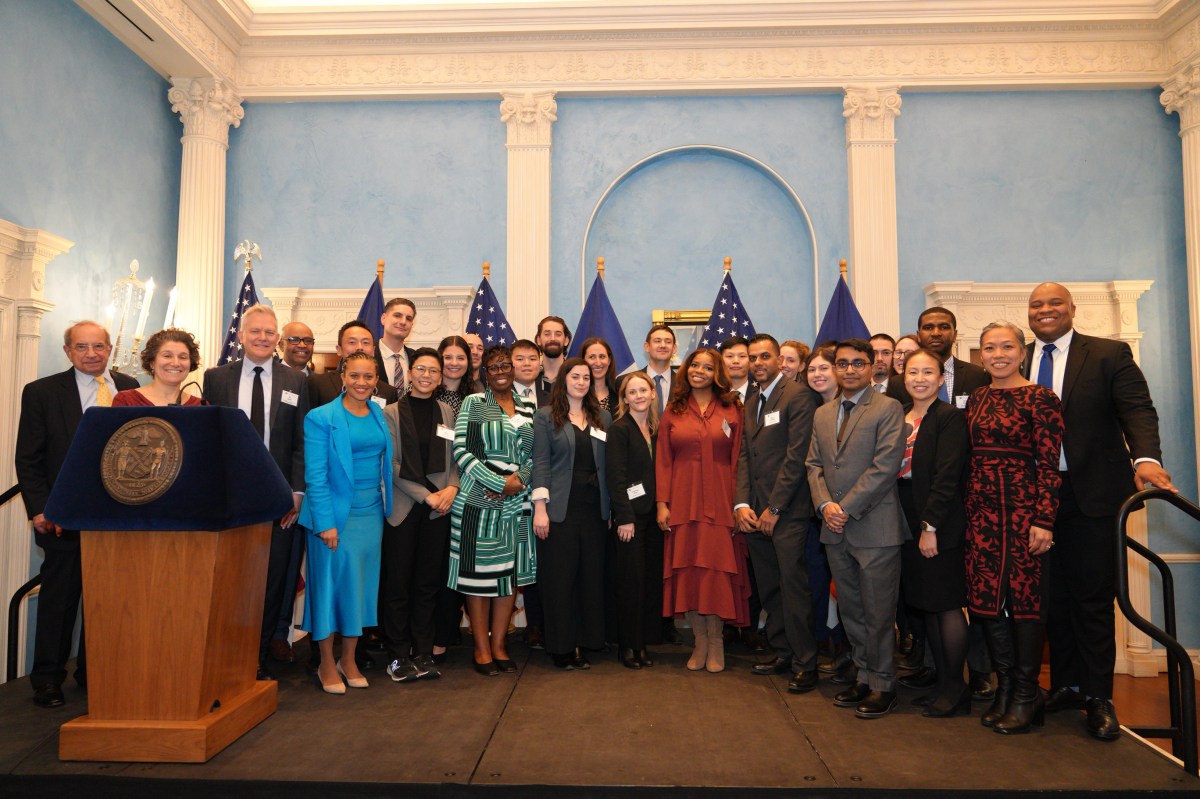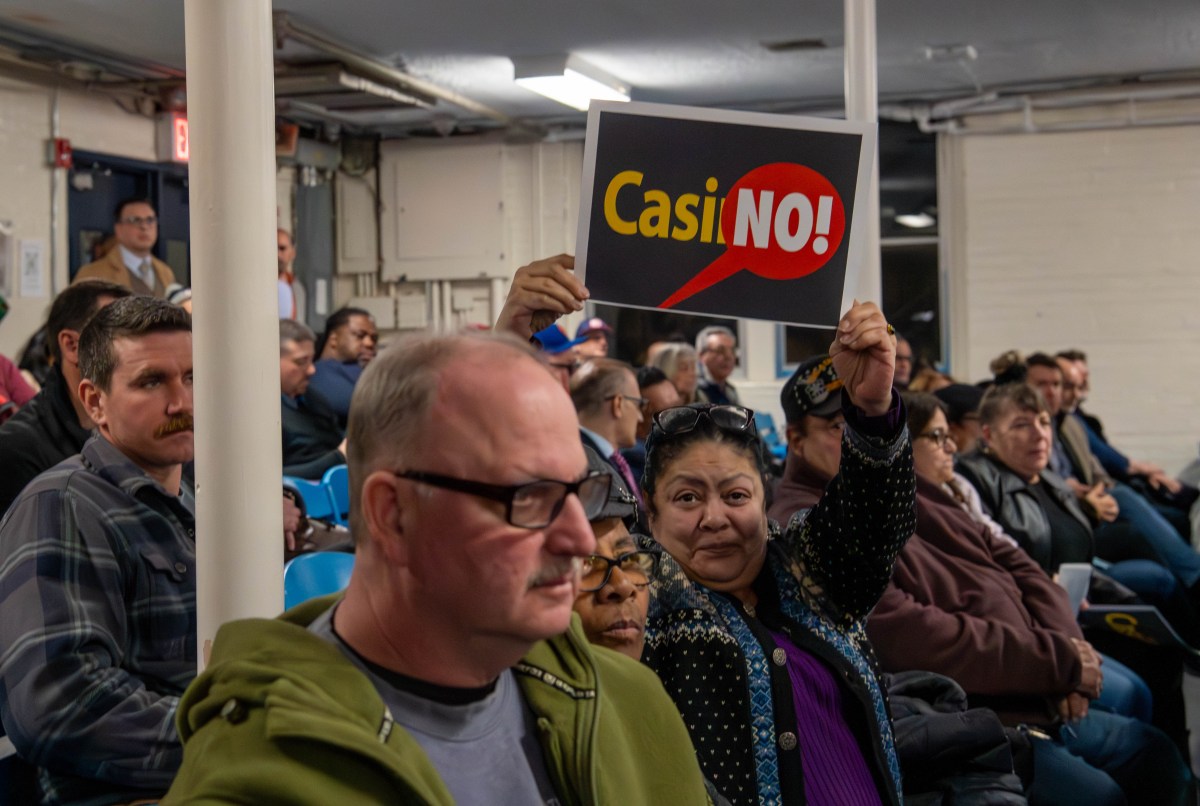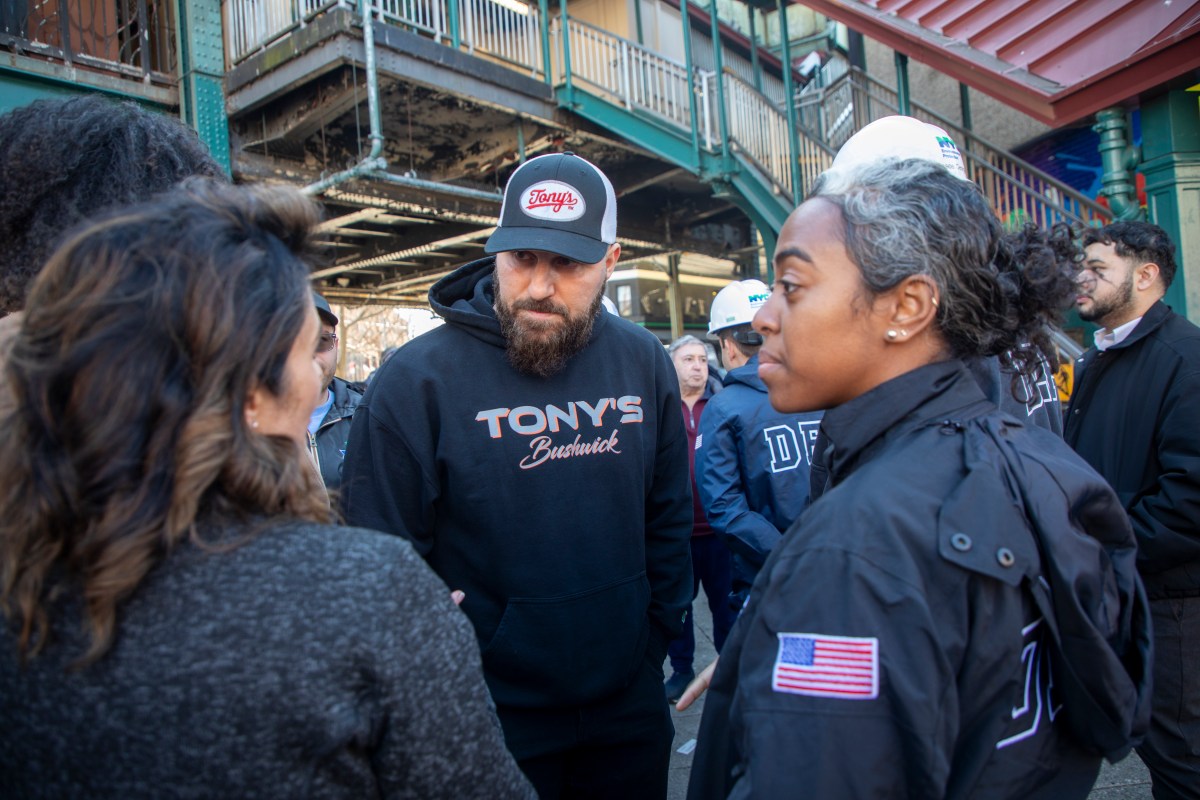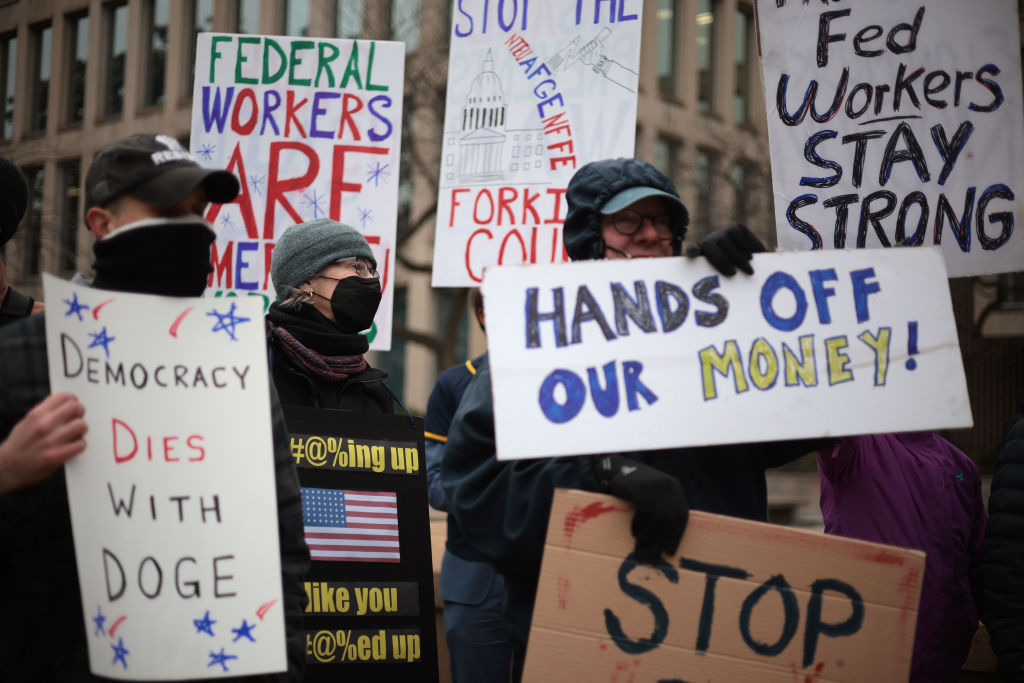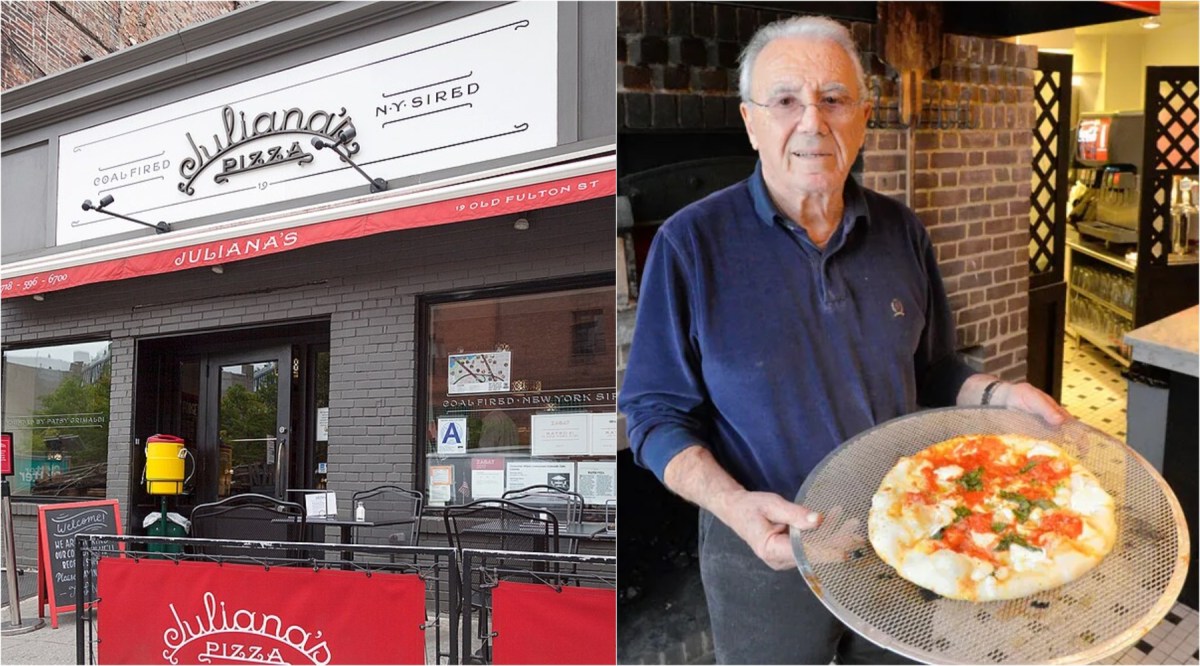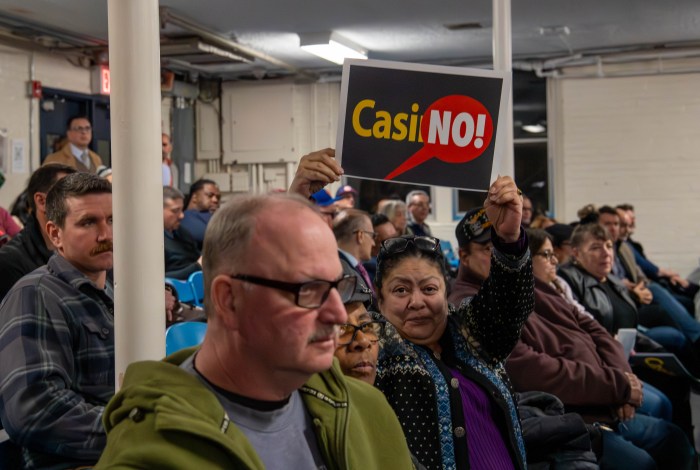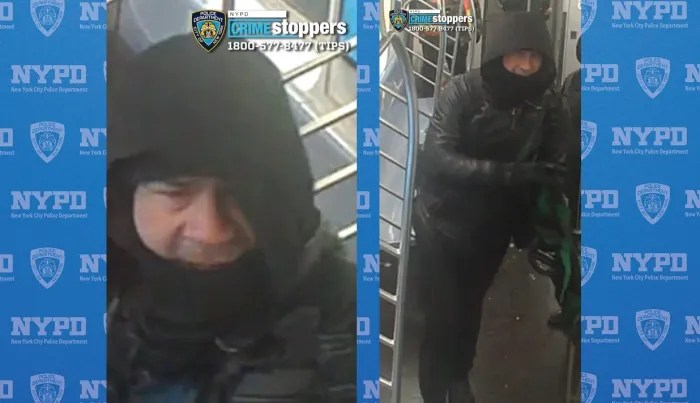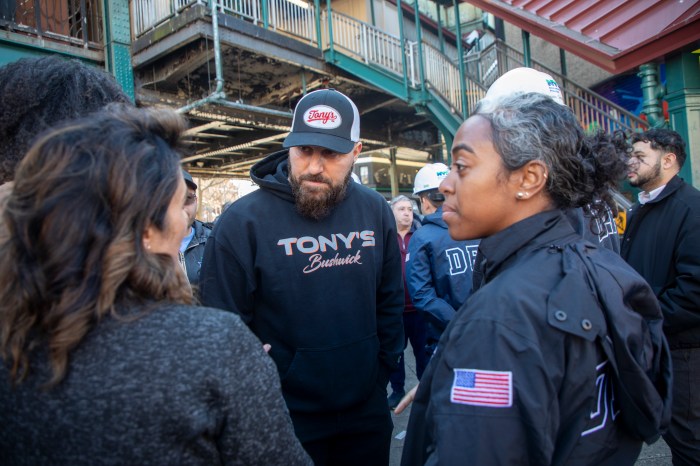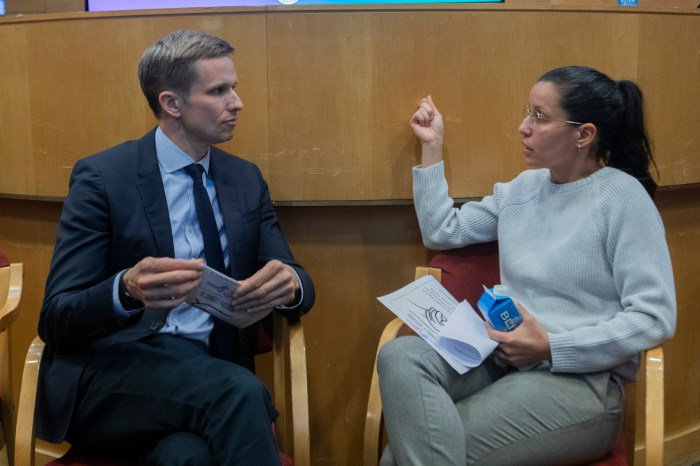From a legal help center for asylum seekers to the digitization of millions of historical records — the internal challenges that city workers took on over the past year are various and massive in scope. So it shouldn’t be a surprise that the city’s innovation prize went to a sizeable list of 19 different workers across 13 agencies this year.
Every year since 2005 a nonprofit called the Hayes Prize Foundation has chosen a group of city employees to honor with an award and a $1,000 cash prize funded by the foundation. On Tuesday night the city celebrated public servant winners for their innovative city government projects at an awards ceremony.
“These city employees represent the best our city has to offer, bringing their bold ideas to the table to address the most pressing challenges facing New Yorkers,” said Mayor Adams.
Winning projects provided shelter to migrants, a new online portal to social service benefits, an expanded a crisis response program and a survey on delivery workers’ wage information, among other significant accomplishments. Honorees were selected from among 77 nominations.
Public servants say that it feels important to be honored for the work they do. Without something like the Hayes Award, many of the services that these workers provide to New Yorkers might go unsung. While Frederick O’Reilly Hayes Prize Foundation has partnered with the Office of Technology and Innovation since last year, not all of the projects directly involved technological prowess. The winners, spread across from 13 city entities, ranged in scope and purpose.
Gary Zhou and Jonathan Yu of the Department of Records and Information Services were honored for their work on the city’s Historical Vital Records Project, a mass digitization project to provide online access to 13.3 million historical birth, death, and marriage records. When site went live it welcomed more than 4,500 visitors in the first week.
Pauline Toole, the agency’s commissioner, said that it was a huge undertaking for a very small agency.
“The fact that we were able to tackle this challenge with our in-house team is significant and it mad everyone in the agency feel like we had a big win,” Toole said.
Two other winners, Alicia Berenyi and Ann Cheng of the Office to the Chief Counsel to the Mayor, have played a critical role in helping the city respond to the influx of asylum seekers. They created the Asylum Application Help Center, which aided migrants fill out over 35,000 legal filings.
“By helping people on this legal pathway, by filling in this critical piece of the puzzle where alleviating a little bit of pressure off our social services system so that that system can really focus on the asylum seekers most in need, and we can get as many asylum seekers out of shelter and into their long-term life,” Berenyi said.
Another key social service project that won an award was called Access HRA, a new mobile and web portal for New Yorkers to manage benefits like Medicaid, SNAP or cash assistance.
“It allowed us to reduce crowds inside of our centers in person, which allows our staff more time for vulnerable populations who might need more support in person,” award winner, Shanise Brown of the Department of Social Services.
The winners said that the prize speaks to the sense of mission that they feel as public servants.
“We have to show up every day to provide critical services to New Yorkers, and that’s all New Yorkers, including our newest neighbors. And we do that every single day, and I’m so lucky to be a part of it,” she said.
In alphabetical order, this year’s prize winners include:
- Alicia Berenyi and Ann Cheng of the Office to the Chief Counsel to the Mayor and the Mayor’s Office of Policy and Planning, who created the Asylum Application Help Center, a groundbreaking initiative in the legal services space that helped migrants file over 35,000 applications for immigration statuses and work authorizations. The center aids migrants on their path toward stability and prosperity by providing individualized support from trained application assistants, as well as help from experienced immigrations lawyers and interpreters on site.
- Shanise Brown of the Department of Social Services (DSS), who manages ACCESS HRA, a client-facing platform that facilitates access for 3 million New Yorkers to social service benefits such as cash assistance, SNAP benefits, discounted MetroCards, housing assistance and more. The portal has received more than 20,000 renewals for Medicaid benefits since deploying a new submission channel for older adults and people living with disabilities in April 2023.
- Sridhar Doraikannu of the Office of Technology & Innovation (OTI), who led an initiative to secure and improve performance of the city’s IT systems, resulting in a 97% improvement in database patching duration. This automation ensures the continuous availability and security of over 800 databases that serve more than 30 city agencies.
- Courtney Dunn and Laquisha Grant of the Mayor’s Office of Community Mental Health, who led the piloting and ongoing expansion of B-Heard, a crisis response program that meets the moment by making health professionals the default responders to thousands of 911 calls, treating mental health crises as public health issues – not public safety problems.
- Rachel Eisenberg and Tyler Peter of the Department of Transportation (DOT), who used geospatial data to create a GIS webmap to oversee the process of making New York City’s bus stops more accessible. The team has reviewed more than 3,000 bus stops and completed more than 50 accessibility improvements since launching the Bus Stop Accessibility review tool.
- Lauren Glick of the New York City Fire Department (FDNY), who leads FDNY’s mapping of its extensive fiber installation project, which helps connect every firehouse, every EMS station, and every 911 call center in the city.
- Annie Gurvis of the Mayor’s Office of Operations, who coordinated emergency shelter for over 6,000 people across five temporary shelters, building and maintaining a database of each site to track its preparedness status and ensure it was up to building safety standards.
- Weiren (Will) Hsiao of the Mayor’s Office of Operations, who built the Capital Projects Dashboard, providing the first comprehensive and publicly accessible view of the city’s capital portfolio, including budget and schedule data for over 1,500 projects. This tool ensures transparency on all capital projects, making information on community-scale projects like smaller parks, cultural institutions, and libraries readily available.
- Samuel Krinsky of the Department of Consumer and Workforce Protection (DCWP), who oversaw DCWP’s Minimum Pay Study, which incorporated analysis of data from restaurant delivery apps and a multilingual survey to tens of thousands of app-based restaurant delivery workers. The study formed the basis of the New York State Supreme Court’s ruling to increase minimum pay for delivery workers to $17.96 per hour, a rate that will increase to $19.96 per hour by 2025.
- Joseph Luciano of the Department of Social Services (DSS), who developed the Food Help NYC Map, a data project that connects New Yorkers to soup kitchens and food pantries that offer free food.
- Anne Schuster of the Department of Health and Mental Hygiene (DOHMH), who overhauled public health survey methods, implementing a more efficient and minimally invasive process of mailing self-collection kits to participants.
- Maxwell Siegel of the Department of Transportation (DOT), who created DOT’s Analytics Platform, helping to forecast performance of the department’s programs and inform decisionmakers by conducting location-based analyses.
- Balraj Talawant and Mohammad Tazdier of the Department of Housing Preservation and Development (HPD), who transformed HPD Online to create a user-friendly site for tenants and prospective tenants to gain a clear understanding of residential buildings across the five boroughs.
- Gary Zhou and Jonathan Yu of the Department of Records and Information Services (DORIS), who since 2015 have digitized more than 13 million birth, death, and marriage documents through the NYC Historical Vital Records Project, welcoming more than 4,500 unique visitors in their first week alone.
